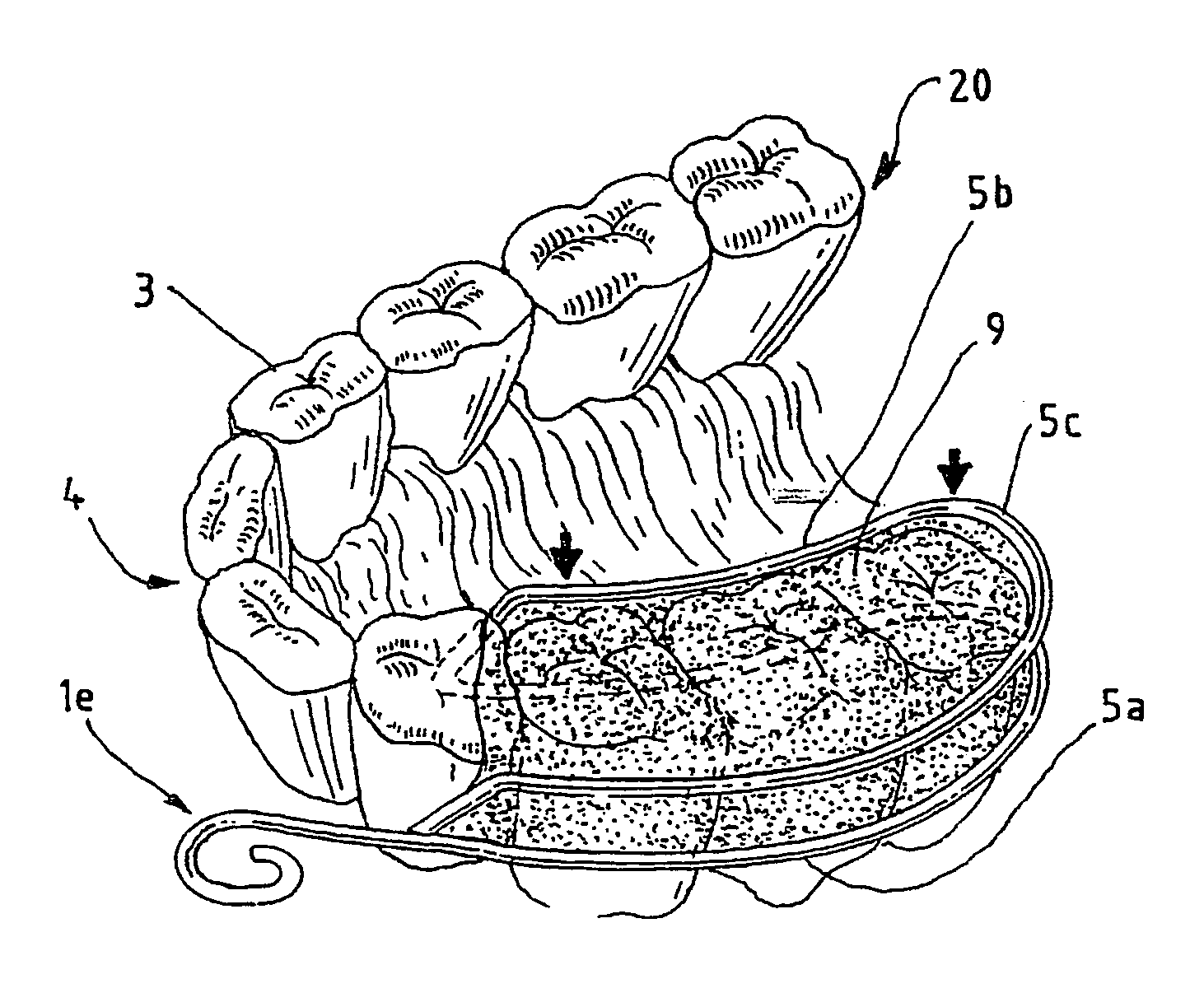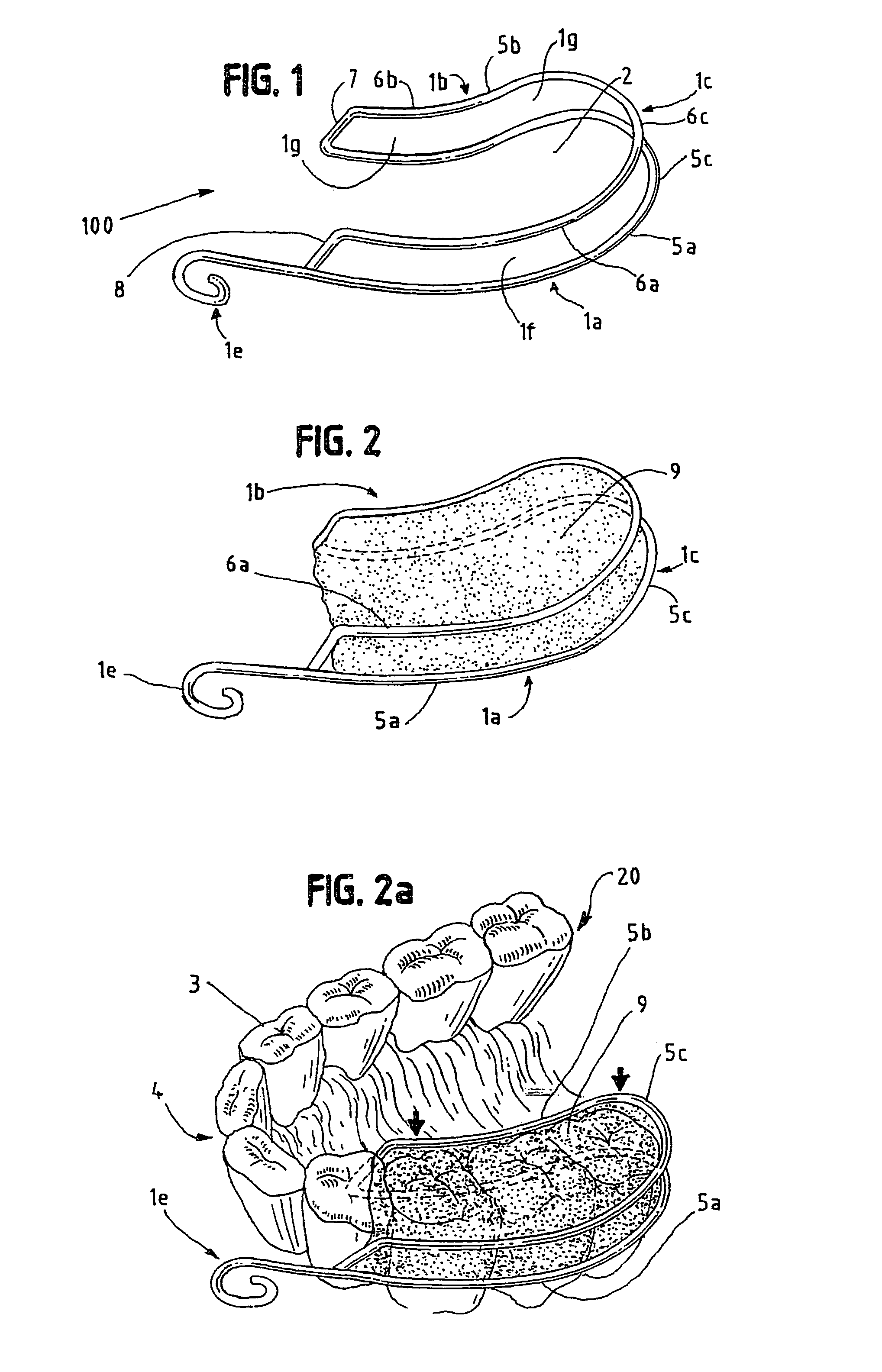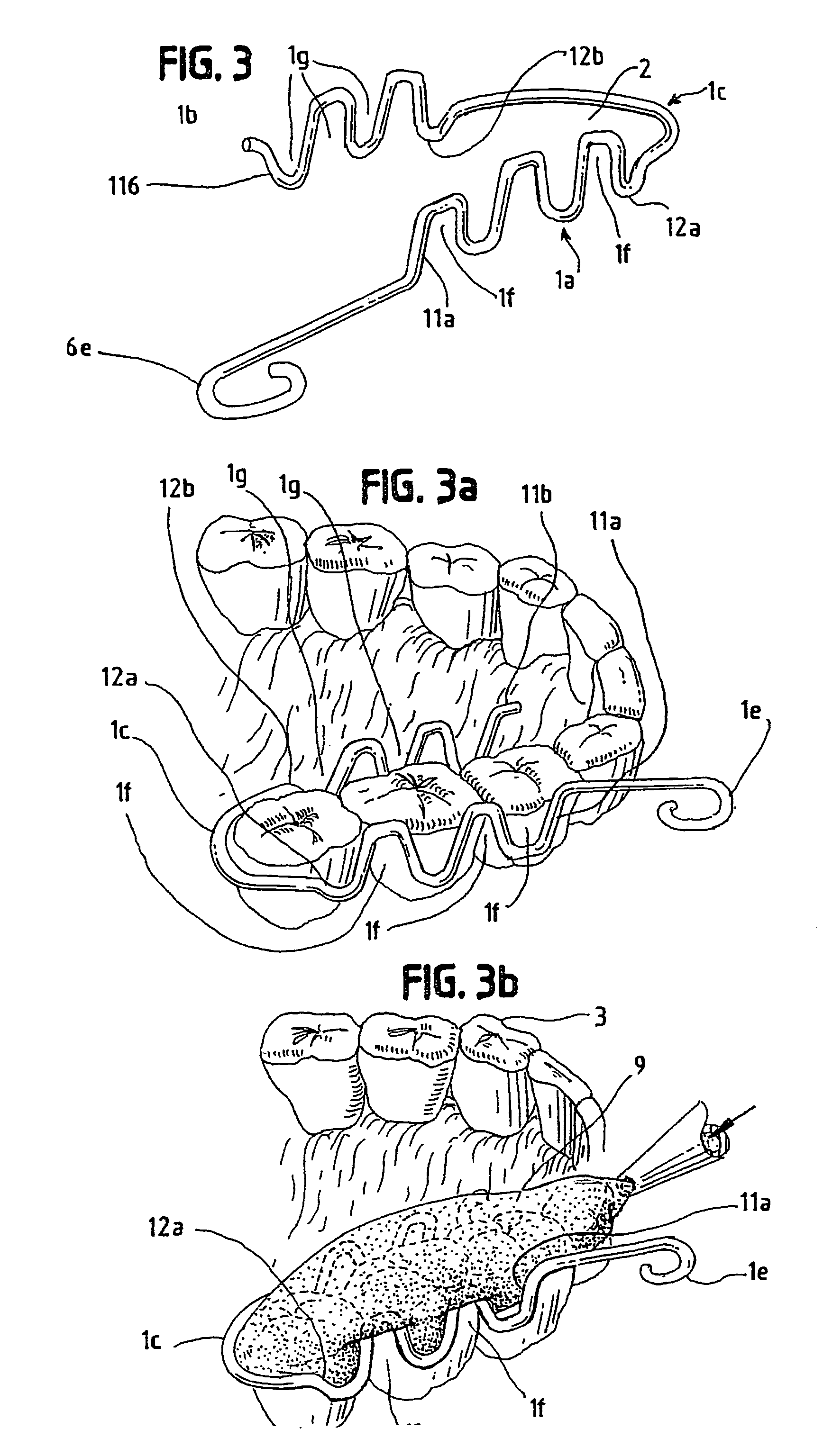Dental impression method and device
a technology of applied in the field of dental impression method and device, can solve the problem that the device is inherently incapable of cross contamination, and achieve the effect of reducing the chance of cross contamination
- Summary
- Abstract
- Description
- Claims
- Application Information
AI Technical Summary
Benefits of technology
Problems solved by technology
Method used
Image
Examples
Embodiment Construction
[0050]Referring now to the drawings, we see embodiments of the device. Each embodiment of the device has a buccal arm 1a, a lingual arm 1b and a buccal-lingual arm joining section 1c. The buccal arm 1a, lingual arm 1b and joining section 1c form a hollow area 2. The hollow area 2 is occupied by the teeth 3 when the device is fitted to a dental arch 4. See for example, FIG. 2a and FIG. 3a. The device may also have a handle 1e. The device forms impression material holding areas 1f and 1g. Applicant uses the term buccal to refer to that section of the support that is to be placed between the dental arch and the teeth and the cheeks or lips. Likewise, applicant uses lingual to refer to that section of the support that is to be placed between the dental arch and the tongue. Further, although applicant shows buccal supports 1a of the device as buccal arms 1a; lingual supports 1b as lingual arms 1b and the portion joining the arms 1c as a buccal-lingual arm joining section 1c, these parts ...
PUM
 Login to View More
Login to View More Abstract
Description
Claims
Application Information
 Login to View More
Login to View More - R&D
- Intellectual Property
- Life Sciences
- Materials
- Tech Scout
- Unparalleled Data Quality
- Higher Quality Content
- 60% Fewer Hallucinations
Browse by: Latest US Patents, China's latest patents, Technical Efficacy Thesaurus, Application Domain, Technology Topic, Popular Technical Reports.
© 2025 PatSnap. All rights reserved.Legal|Privacy policy|Modern Slavery Act Transparency Statement|Sitemap|About US| Contact US: help@patsnap.com



